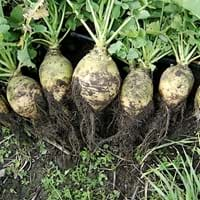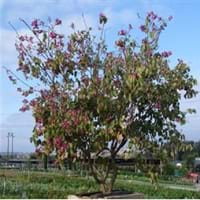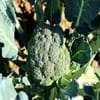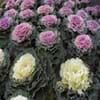Life Span
Biennial
Perennial
Origin
Hybrid origin
Hybrid origin, Southeastern Asia
Types
Argentine canola
annua – annual rape and summer rape
swede rape
pabularia – Hanover-salad
Bauhinia. blakeana, Bauhinia variegata Candida.
Habitat
Not Available
tropical environments
USDA Hardiness Zone
6-9
10-15
Sunset Zone
A1, A2, A3, H1, H2, 1a, 1b, 2a, 2b, 3a, 3b, 4, 5, 6, 7, 8, 9, 10, 11, 12, 13, 14, 15, 16, 17, 18, 19, 20, 21, 22, 23, 24
H1, H2, 13, 19, 21, 23, 24
Habit
Rosette/Stemless
Oval or Rounded
Flower Color
Yellow, Light Yellow
Pink, Light Pink, Rose, Burgundy, Lavender, Violet
Flower Color Modifier
Bicolor
Bicolor
Fruit Color
Tan, Brown
Not Available
Leaf Color in Spring
Black, Green, Green, Dark Green
Green, Blue Green
Leaf Color in Summer
Green, Blue Green
Green, Blue Green
Leaf Color in Fall
Green, Blue Green
Green, Blue Green
Leaf Color in Winter
Green, Blue Green
Green, Blue Green, Yellow green
Leaf Shape
Ovate
Orbiculate
Plant Season
Spring, Summer, Fall, Winter
Spring, Fall, Winter
Sunlight
Full Sun
Full Sun, Partial Sun
Type of Soil
Loam, Sand
Loam, Sand
The pH of Soil
Acidic, Neutral
Acidic, Neutral
Soil Drainage
Well drained
Well drained
Bloom Time
Spring, Late Spring, Early Summer, Summer
Late Fall, Early Winter, Winter, Late Winter
Tolerances
Drought
Drought, Salt, Variety of soil types
Where to Plant?
Ground
Ground
How to Plant?
Seedlings
Grafting, Layering, Stem Cutting
Plant Maintenance
Medium
Medium
Watering Requirements
Water frequently while growing, Water slowly, and allow to dry completely between soakings
Requires regular watering, Water more in summer
In Summer
Lots of watering
Lots of watering
In Spring
Moderate
Moderate
In Winter
Average Water
Average Water
Soil pH
Acidic, Neutral
Acidic, Neutral
Soil Type
Loam, Sand
Loam, Sand
Soil Drainage Capacity
Well drained
Well drained
Sun Exposure
Full Sun
Full Sun, Partial shade, Partial Sun
Pruning
Remove damaged leaves, Remove dead branches, Remove dead leaves
Cut or pinch the stems, Prune ocassionally, Remove damaged leaves, Remove dead branches, Remove dead leaves
Fertilizers
All-Purpose Liquid Fertilizer, Apply N-P-K
Less fertilizing
Pests and Diseases
Blackleg, Clubroot, Flea Beetles, Grasshoppers, Lygus bugs, Red blotch, Slugs, Snails, Verticillium Wilt, white rust
Bacterial leaf scorch, Borers, Caterpillars, Leaf spot, Mites
Plant Tolerance
Drought, Humidity, Shade areas
Drought, Salt, Variety of soil types
Flower Petal Number
Single
Single
Foliage Texture
Coarse
Medium
Foliage Sheen
Matte
Matte
Attracts
Flea beetles, Moths, Snails
Bees, Birds
Allergy
Asthma, Mild Allergen, Toxic
Not Available
Aesthetic Uses
Not Used For Aesthetic Purpose
Beautification, Bouquets, Cottage Garden, Showy Purposes
Beauty Benefits
Not Available
Not Available
Environmental Uses
Air purification
Air purification
Medicinal Uses
Diuretic, Emollient
No Medicinal Use
Part of Plant Used
Leaves, Root
Flowers, Leaves, Seeds
Other Uses
Not Available
Food for insects, Used As Food
Used As Indoor Plant
No
No
Used As Outdoor Plant
Yes
Yes
Garden Design
Edible, Herb / Vegetable, Mixed Border
Container, Feature Plant, Hedges, Mixed Border, Screening / Wind Break, Shade Trees, Street Trees, Tropical
Botanical Name
BRASSICA napus var. napobrassica
BAUHINIA blakeana
Common Name
Rutabaga, Swede , Swedish Turnip
Blake's Butterfly Tree, Chinese Orchid Tree, Hong Kong Orchid Tree
In Hindi
शलजम
हांगकांग आर्किड पेड़
In German
Steckrübe
Hong Kong Orchidee Baum
In French
rutabaga
Hong Kong arbre d'orchidée
In Spanish
nabo sueco
árbol de orquídea Hong Kong
In Greek
μέγα γογγύλιον
δέντρο ορχιδέα Χονγκ Κονγκ
In Portuguese
Rotavaga
árvore de orquídea de Hong Kong
In Polish
Rotavaga
storczyk drzewo Hong Kong
In Latin
Rotavaga
Hong Kong Orchid ligno
Phylum
Tracheophyta
Angiosperms
Class
Magnoliopsida
Magnoliopsida
Order
Brassicales
Fabales
Family
Brassicaceae
Fabaceae
Clade
Angiosperms, Eudicots, Rosids
Angiosperms, Eudicots, Rosids
Tribe
Not Available
Not Available
Subfamily
Not Available
Caesalpinioideae
Number of Species
Not Available
Season and Care of Rutabaga and Hong Kong Orchid Tree
Season and care of Rutabaga and Hong Kong Orchid Tree is important to know. While considering everything about Rutabaga and Hong Kong Orchid Tree Care, growing season is an essential factor. Rutabaga season is Spring, Summer, Fall and Winter and Hong Kong Orchid Tree season is Spring, Summer, Fall and Winter. The type of soil for Rutabaga is Loam, Sand and for Hong Kong Orchid Tree is Loam, Sand while the PH of soil for Rutabaga is Acidic, Neutral and for Hong Kong Orchid Tree is Acidic, Neutral.
Rutabaga and Hong Kong Orchid Tree Physical Information
Rutabaga and Hong Kong Orchid Tree physical information is very important for comparison. Rutabaga height is 30.00 cm and width 30.00 cm whereas Hong Kong Orchid Tree height is 460.00 cm and width 460.00 cm. The color specification of Rutabaga and Hong Kong Orchid Tree are as follows:
Rutabaga flower color: Yellow and Light Yellow
Rutabaga leaf color: Black, Green and Green, Dark Green
Hong Kong Orchid Tree flower color: Pink, Light Pink, Rose, Burgundy, Lavender and Violet
- Hong Kong Orchid Tree leaf color: Green and Blue Green
Care of Rutabaga and Hong Kong Orchid Tree
Care of Rutabaga and Hong Kong Orchid Tree include pruning, fertilizers, watering etc. Rutabaga pruning is done Remove damaged leaves, Remove dead branches and Remove dead leaves and Hong Kong Orchid Tree pruning is done Cut or pinch the stems, Prune ocassionally, Remove damaged leaves, Remove dead branches and Remove dead leaves. In summer Rutabaga needs Lots of watering and in winter, it needs Average Water. Whereas, in summer Hong Kong Orchid Tree needs Lots of watering and in winter, it needs Average Water.





